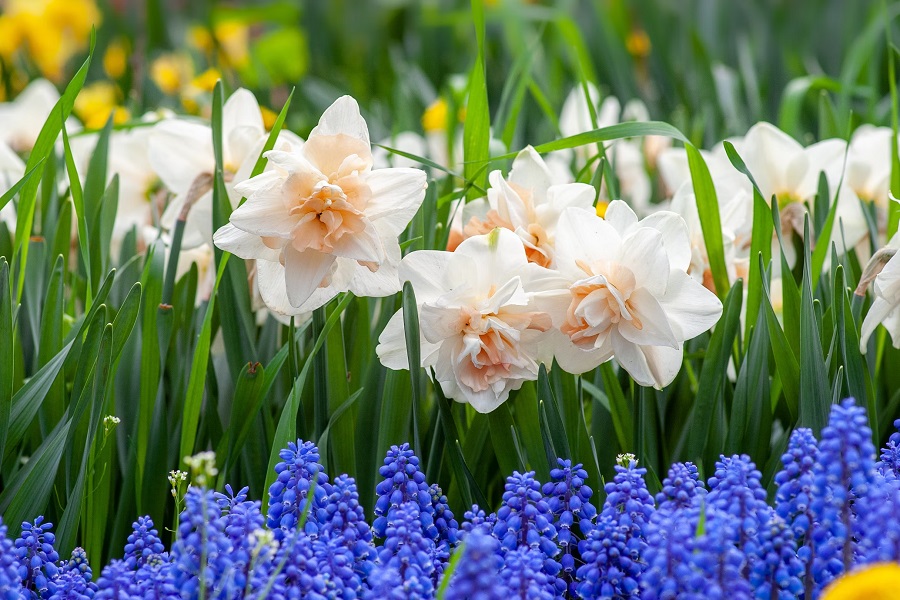
A successful small garden works hard for the space it takes up. That means giving each section a clear role without cluttering it with too much at once. Start with a simple plan based on how you want to use your garden. That might include a spot for sitting, a place for growing herbs or vegetables, and storage tucked into quieter corners.
Think vertically. Walls and fences are ideal for shelves, tool hangers or climbing plants. Raised beds are also helpful, as they give you neat planting zones and better drainage without taking over your entire space.
Opt for furniture that does more than one job. A bench with hidden storage or a fold-down table can make the area flexible without adding bulk. Keep pathways wide enough to move easily. That flow makes even the tightest layout feel more open.
Smart Additions That Fit Small Spaces
When space is limited, every addition needs to serve a purpose. This applies to structures as well as decor. One way to bring function and style into a garden is by exploring stylish options for compact garden design, like small greenhouses. These can be a game-changer for those who want to grow plants with more control over temperature and pests.
Compact greenhouses come in different shapes and finishes to suit even narrow gardens. Some sit neatly against a wall or fence, using less floor space while catching enough light to support a range of crops. Glazing options vary from glass to polycarbonate, and frames can match the look of your garden, aluminium for something sleek or timber for a more natural tone.
These greenhouses can be productive all year round, especially when paired with staging or vertical growing systems. Their size makes them easy to manage and less expensive to heat if needed during colder months.
Vertical Gardening and Grow-Your-Own Ideas
Small spaces benefit from upward thinking. Climbing plants, mounted herb racks and tiered planters are just a few ways to use height to your advantage. These setups save floor space, while offering plenty of growing space.
Many edibles thrive in compact gardens. Salad leaves, herbs, strawberries, chillies and tomatoes all suit containers and shallow beds. With some attention to light, water and spacing, growing fresh produce in surprisingly limited areas is easy.
Seasonal planning helps keep the space active throughout the year. Hardy greens can fill gaps during colder months, and herbs grow back quickly after harvesting. Mixing edibles with decorative plants adds colour without giving up function.
Using tools like trellises or hanging baskets increases planting space without crowding the garden. Just be sure to keep heavier planters secured and avoid shading out key areas.
Creating a Garden That Looks Good and Works Hard
A small garden needs to feel calm and easy to use. Visual design plays a big part in making this happen. Choose a consistent colour palette for pots, furniture and plants to keep the space feeling pulled together.
Think about lines and edges. Square containers might work better in tighter corners, while round shapes can soften harder areas. Mirrors, light colours and glass surfaces help bounce light into darker corners and create the feel of more space.
Keeping the garden tidy is just as important as making it look good. Baskets or boxes hidden under benches or tables can hold tools, compost or spare pots. A small shed or waterproof storage seat is enough for most basic equipment.
Lighting can help extend the use of your garden into the evening. Battery-powered or solar string lights create a gentle glow without needing mains power or complex wiring. Choose warm tones to make the area feel more relaxed and comfortable.
What to Avoid When Planning Small Garden Setups
Crowding the space is one of the most common issues in small gardens. It’s tempting to squeeze in everything, but that approach makes the area harder to enjoy. Prioritise comfort and flow over fitting in extra features.
Using oversized furniture or containers can throw off the balance of the space. Instead, look for slimline designs or foldaway options to make room without giving up use. Stick to a few strong design elements instead of mixing many colours and styles.
Watch out for poor drainage or overwatering. Small gardens often rely on containers, leading to root rot if water builds up. Use pots with drainage holes and add grit or stones to the base to support healthy roots.
Ignoring the seasons is another easy mistake. Planning for how your garden will look and feel across different months keeps it enjoyable throughout the year. Evergreen plants, rotating crops and low-maintenance shrubs help maintain structure even when flowers fade.
Of course, keep pruning and cleaning on a regular schedule. Fallen leaves, weeds, or dead stems can quickly take over and make the area feel messy. A quick weekly tidy keeps things looking fresh with minimal effort.
Take Action and Transform Your Outdoor Space
Even the smallest garden has potential when given the right attention. With careful planning, useful structures, and some creativity, these compact spaces can become personal retreats, growing spots, or social corners.
Try one idea from this guide and see how it changes your space. That could mean installing a vertical planter, rethinking the layout or investing in a structure that adds style and function. The key is to keep it practical, enjoyable and well-suited to how you want to use it.
No matter the size of your plot, there’s room to grow something rewarding. Make the most of what you have and enjoy the results.

Just a group of real women dealing with life’s daily struggles! Want to write for us? Email: hello@thedailystruggle.co.uk